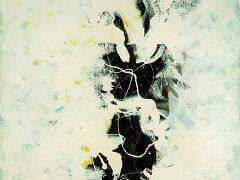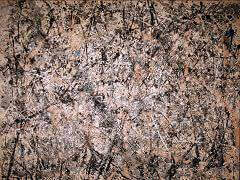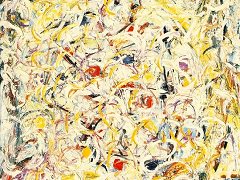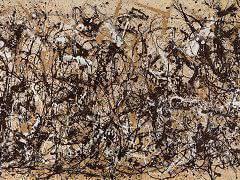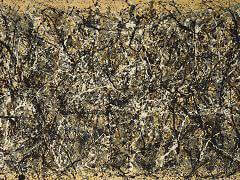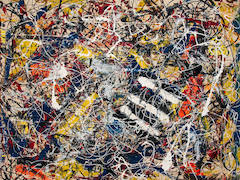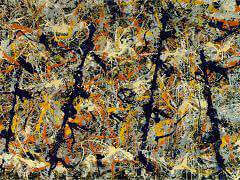The She Wolf, 1943 by Jackson Pollock
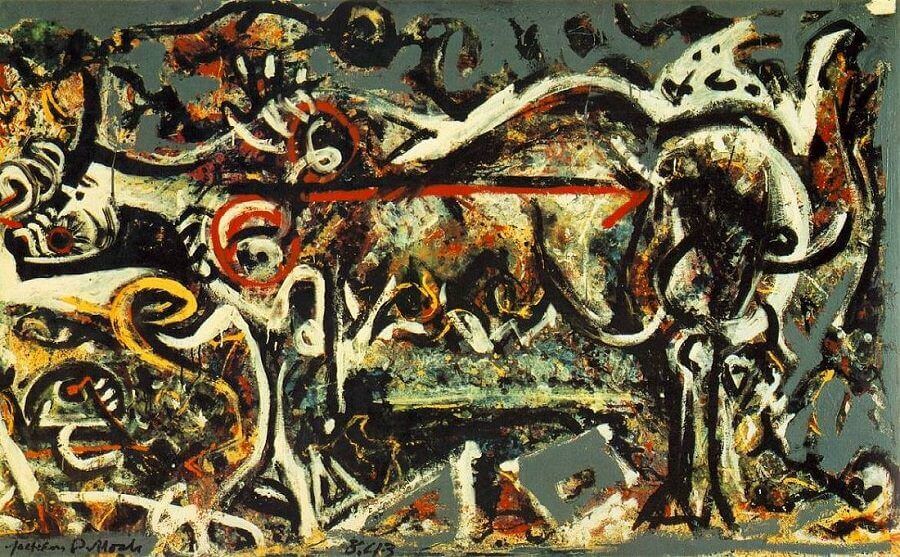
In the early 1940s Pollock, like many of his peers, explored primeval or mythological themes in his work. The wolf in this painting may allude to the animal that suckled the twin founders of Rome, Romulus and Remus, in the myth of the city's birth. But "She-Wolf came into existence because I had to paint it", Pollock said in 1944. In an attitude typical of his generation, he added, "Any attempt on my part to say something about it, to attempt an explanation of the inexplicable, could only destroy it" The She-Wolf was featured in Pollock's first solo exhibition, at Art of This Century gallery in New York in 1943. MoMA acquired the painting the following year, making it the first work by Pollock to enter a museum collection.
When Pollock painted The She-Wolf he had not yet arrived at his so-called "drip" style, one of the great inventions of Abstract Expressionism. The canvas's traces of multicolored washes and spatters show that a free-form abstraction and an unfettered play of materials were already parts of his process; but in this work and others, his focus is a compound of mythology and iconography of the unconscious. (He was influenced here both by Surrealism and his own Jungian analysis.)
Drawn in heavy black and white lines, the wolf advances leftward. Her body is overlaid with abstract lines and patches, thick, unreadable calligraphy that spreads throughout the canvas. These hieroglyphic intimations, along with the somber palette and the conjuring of myth, reflect the climate of a period shadowed by war. Intended to approach ultimate human mysteries, they were to be simultaneously meaningful and unknowable.
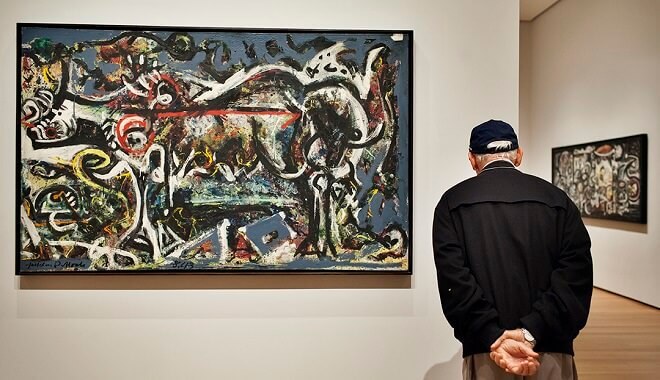
In the immediate aftermath of World War II, Abstract Expressionist Jackson Pollock, Mark Rothko, Jasper Johns, and their peers - not yet a cohesive group - created imagery that evoked primitive man or ancient myth, and conjured an aquatic or geological pre-human world. The She-Wolf, made before Pollock developed his signature "drip" style, already shows that a free-form abstraction and an unfettered play of materials were already parts of his process. Another masterpiece of the same kind is Slow Swirl at the Edge of the Sea by Mark Rothko, which shows two creatures floating between sea and sky, surrounded by arabesques, spirals, and stripes that betrays the influence of Surrealism on Rothko's early work.



